Learn Your Garden’s Microclimates for a Resilient Landscape
Planning a sustainable garden begins with understanding microclimates and how they affect plant growth. Microclimates are pockets of space within your home landscape where the temperature and climate can be very different from the ambient temperature and overall climate of your neighborhood. Your yard probably has several microclimates. For example, your landscape may have a place that is windy and exposed with dry soil, as well as a place that’s shady and moist.
Sun exposure and terrain are the two major factors that influence microclimate. In this article we’ll explain sun exposure for gardens in the Northern Hemisphere and cover terrain conditions that influence microclimate. (For the Southern Hemisphere gardeners, the northern and southern exposures are switched.)
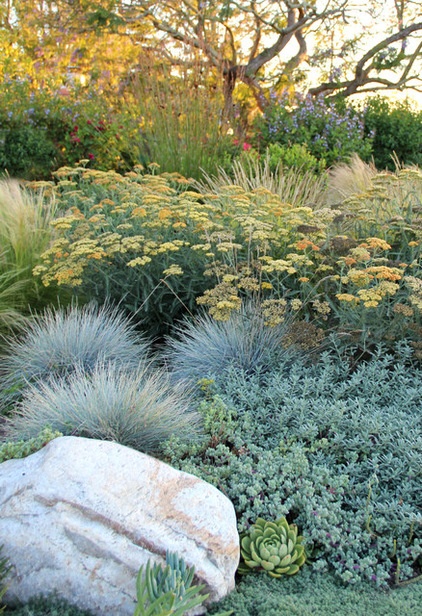
Your Overall Climate
You first need to understand the overall climate where you live. Use this checklist as a starting point.
What is your growing zone? In the U.S., many people use the U.S. Department of Agriculture’s (USDA’s) hardiness zone map to determine your area’s minimum winter temperatures. Your zone’s minimum temperature will let you know if a plant can survive winter where you live, because plants are rated by growing zone based on their cold hardiness. This is most important for cold climates.What is the length of your growing season? Determine how many days above freezing you typically have. For warm and temperate climates, you need to know how intense your heat can be. Some plants just can’t handle a southern climate’s sun and will die in response. Just as the USDA’s Plant Hardiness Zone Map charts a region’s minimum temperatures, the American Horticultural Society’s (AHS’) Plant Heat Zone Map charts the country’s high temperatures.How much precipitation do you get annually, and when does it occur? Do you have wet and dry seasons? Does it rain throughout the year? Does it hardly rain at all? Know how many inches on average your area receives each year and during which months.
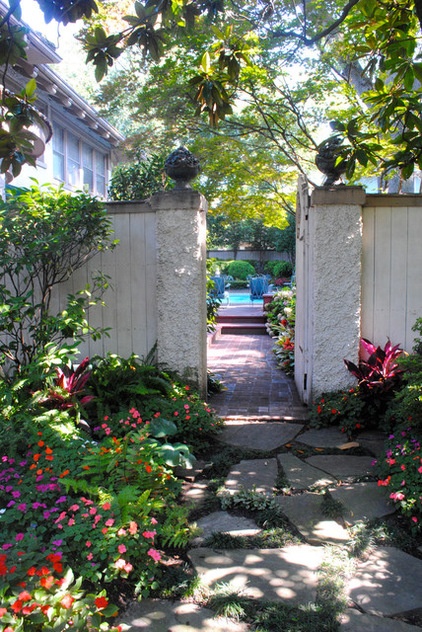
Sun Exposure
Sun exposure is the major factor that influences microclimate. Your garden’s exposure is partially determined by the cardinal direction it faces or is exposed to. For example, a garden with a northern exposure is bounded by the north face of a building, or some other structure, and faces north. Exposure also depends on the number of hours of daylight the garden area receives. For most plants requiring full sun, you need at least six hours, and preferably eight or more, of direct light.
Watch your landscape at different times of day and record which areas are in full sun, partial sun and full shade. This can be done on a simple sketch of your garden in plan view that you keep as a reference that will help you design your garden according to your microclimates. If you’d prefer to hire someone, a landscape professional can do a more robust site analysis with detailed notes about your property’s microclimates.
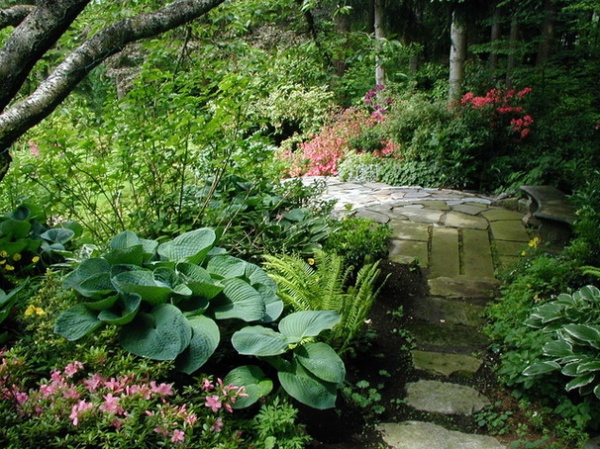
Northern versus southern exposure. The north-facing areas of your landscape will be the coolest spots, because they receive the least amount of radiant heat and direct light from the sun. Additionally, they can be exposed to fierce winter winds. You’ll notice that the north side of your house is where snow will take the longest to melt in spring, if it snows where you live. It’s also a few degrees cooler than the rest of your yard year-round. This means that you don’t want to plant a frost-sensitive plant in an area with northern exposure in a warm-climate garden.
South-facing areas receive plentiful sunshine. At times they might receive too much sun and become dry, or the plants’ foliage will burn from overexposure to intense light. Either plant full-sun plants that are heat tolerant or shade the area with a deciduous tree that will provide shade during summer and let in light during winter.
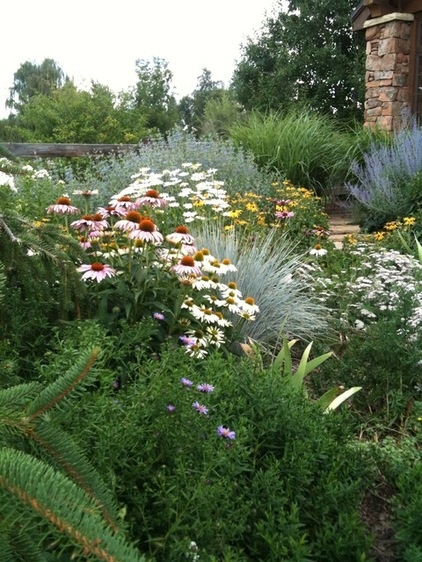
Eastern versus western exposure. Areas with an eastern exposure have a distinct advantage over other exposures: They can receive six hours of morning sun but can be easily shaded from the scalding afternoon heat with a well-placed shade tree.
Western exposure can be the most challenging, because it is where plants will become very dry in the intense afternoon heat. The sun builds radiant heat on the earth’s surface over the course of the day. By late afternoon a lot of heat has built up on surfaces and radiates back into the atmosphere. This can cause plants to languish and wilt. For this reason, western exposures are great for drought-tolerant plants that thrive in the heat. Be sure to add organic matter to your soil and mulch heavily to retain moisture there.
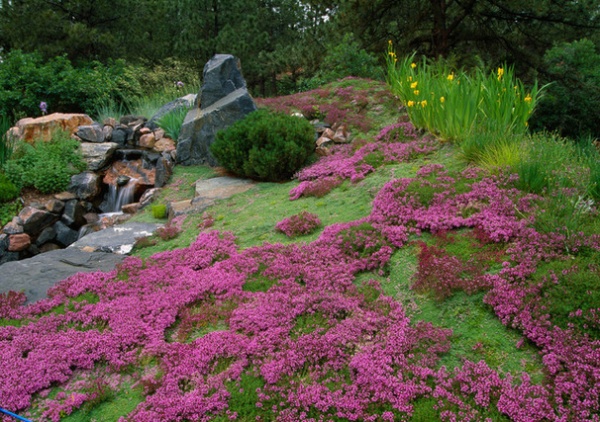
Terrain
The form of the ground affects microclimates because of the way air circulates around topography. Additionally, a steep slope can intensify the effects of sun exposure in both positive and negative ways.
Valleys trap cool air and moisture. Think of fog that lingers in a valley. That moist air is hanging at a low point above the ground. Hot summer days will feel more stagnant in a low spot in humid, warm places like the Southeast, because air does not circulate well. However, low spots in northern climates can be great for wind protection. Even a small depression can provide a buffer against hot or cold winds.
Steep slopes can create soil that drains freely and can increase the intensity of exposure. For example, a steep west-facing slope will be very dry from the combination of afternoon sun and fast-draining soil. A steep north-facing slope will experience intense northern wind and may never get any sun — even in the summer.
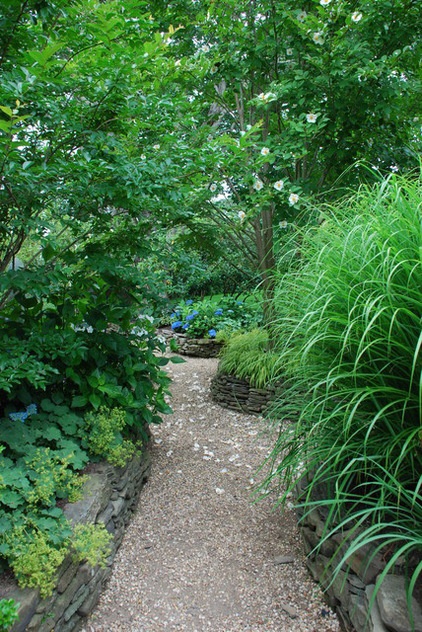
Structures, Trees and Other Microclimate Influences
Your home, garden shed, big hedges and large trees will impact your microclimate. Underneath the overhangs of your roof, you will have what’s called a rain shadow, where little rain reaches the ground. Planting a large shade tree will cool down an entire space. Conversely, removing a large tree will warm a space. Dense hedges are like walls; they can cast shade and affect sun and wind exposure.
Paving, like a driveway or large patio, also affects the microclimate because those surfaces retain, reflect and release heat in different ways. Dark pavements retain more heat than light pavements and create a warmer microclimate. Light-colored pavements reflect light and do not have as much heat gain. Inventory your paving and structures and observe how the plants near them perform in different seasons.
Understanding your landscape’s microclimates is a great first step toward planning a resilient garden. You’ll know when you have the right plants in the right place, because they will grow and thrive without so much work.
More:
Get a Head Start on Planning Your Garden, Even if It’s Snowing
More ways to save water at home












